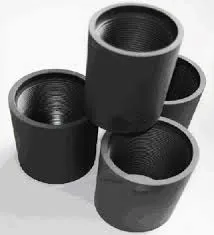- Afrikaans
- Albanian
- Amharic
- Arabic
- Armenian
- Azerbaijani
- Basque
- Belarusian
- Bengali
- Bosnian
- Bulgarian
- Catalan
- Cebuano
- Corsican
- Croatian
- Czech
- Danish
- Dutch
- English
- Esperanto
- Estonian
- Finnish
- French
- Frisian
- Galician
- Georgian
- German
- Greek
- Gujarati
- Haitian Creole
- hausa
- hawaiian
- Hebrew
- Hindi
- Miao
- Hungarian
- Icelandic
- igbo
- Indonesian
- irish
- Italian
- Japanese
- Javanese
- Kannada
- kazakh
- Khmer
- Rwandese
- Korean
- Kurdish
- Kyrgyz
- Lao
- Latin
- Latvian
- Lithuanian
- Luxembourgish
- Macedonian
- Malgashi
- Malay
- Malayalam
- Maltese
- Maori
- Marathi
- Mongolian
- Myanmar
- Nepali
- Norwegian
- Norwegian
- Occitan
- Pashto
- Persian
- Polish
- Portuguese
- Punjabi
- Romanian
- Russian
- Samoan
- Scottish Gaelic
- Serbian
- Sesotho
- Shona
- Sindhi
- Sinhala
- Slovak
- Slovenian
- Somali
- Spanish
- Sundanese
- Swahili
- Swedish
- Tagalog
- Tajik
- Tamil
- Tatar
- Telugu
- Thai
- Turkish
- Turkmen
- Ukrainian
- Urdu
- Uighur
- Uzbek
- Vietnamese
- Welsh
- Bantu
- Yiddish
- Yoruba
- Zulu
Understanding Well Tubing and Casing for Effective Oil and Gas Extraction Techniques
Understanding Well Tubing and Casing in Oil and Gas Operations
In the oil and gas industry, the efficient extraction of hydrocarbons depends on many factors, including the structural integrity and design of the well. Two critical components that play a vital role in the construction and functionality of a well are tubing and casing. Understanding the differences between these two elements is crucial for engineers, geologists, and technicians involved in drilling operations.
Well Casing The Structural Backbone
Casing is a series of pipes run through the borehole after drilling to provide structural support and to isolate the production zone from surrounding formations. Installed in sections, casing helps to maintain the well's integrity, preventing collapses and ensuring that formation fluids are contained.
The primary function of casing is to protect the well from environmental factors, such as groundwater contamination and pressure from surrounding rock formations. It also serves to facilitate the drilling operation by providing a stable wall to which drilling equipment can be attached. The types of casing vary based on the depth of the well, the geological conditions encountered, and the type of hydrocarbons being extracted. Common types of casing include surface casing, intermediate casing, and production casing, each serving distinct purposes throughout the well's lifecycle.
Surface casing is used to protect freshwater aquifers near the surface, while intermediate casing may be installed to accommodate pressure differences in deeper formations. Production casing, on the other hand, is the final casing that allows for the extraction of hydrocarbons. It is important to select the appropriate casing material, usually steel, for the pressure and temperature conditions expected within the well.
Well Tubing The Conduit of Production
well tubing and casing

While casing provides structural support, tubing acts as the vehicle through which hydrocarbons are produced. After the well has been drilled and cased, tubing is introduced into the well to transport oil or gas from the reservoir to the surface. Tubing is generally smaller in diameter than casing, allowing for more efficient flow rates and handling of produced fluids.
The tubing string is designed to withstand various operational stresses, including high pressures and corrosive environments. It is typically made from carbon steel or stainless steel, with special coatings or treatments to enhance its durability and resistance to corrosion. The design and selection of tubing are influenced by factors such as fluid composition, temperature, and pressure conditions in the reservoir.
The Importance of Proper Installation
Both tubing and casing must be installed correctly to ensure the safety and efficiency of oil and gas operations. Misalignment, improper sealing, or inadequate support can lead to severe issues, including blowouts, leaks, or formation damage. Engineers must carefully calculate the depth, pressure, and material requirements for each application, and follow stringent protocols during installation.
Regular maintenance and inspection of both tubing and casing are vital to prolonging the life of the well. Issues such as corrosion, fatigue, or damage from drilling operations necessitate ongoing assessment to ensure that both components continue to function effectively. Technologies such as downhole sensors and non-destructive testing methods are increasingly being utilized to monitor the condition of both casing and tubing.
Conclusion
In summary, well tubing and casing are essential elements of oil and gas well construction and operation. While casing provides the necessary structural integrity and protection for the well, tubing serves as the channel for hydrocarbon production. A thorough understanding of their functions, materials, and installation practices is imperative for ensuring successful drilling and production operations. As the industry continues to evolve, innovations in materials and monitoring technologies will likely enhance the effectiveness and safety of these critical components, contributing to more sustainable practices in hydrocarbon extraction.
-
Tubing Pup Joints: Essential Components for Oil and Gas OperationsNewsJul.10,2025
-
Pup Joints: Essential Components for Reliable Drilling OperationsNewsJul.10,2025
-
Pipe Couplings: Connecting Your World EfficientlyNewsJul.10,2025
-
Mastering Oilfield Operations with Quality Tubing and CasingNewsJul.10,2025
-
High-Quality Casing Couplings for Every NeedNewsJul.10,2025
-
Boost Your Drilling Efficiency with Premium Crossover Tools & Seating NipplesNewsJul.10,2025







